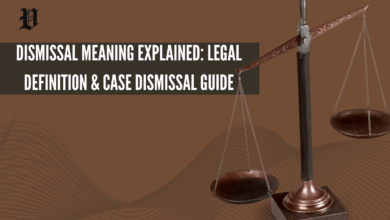INA 237 Unveiled: Your Guide to US Deportation Laws

Maybe you came here as an immigrant, got your green card after years of waiting, and even became a lawful permanent resident. Everything seems stable—until one day, a minor run-in with the law turns your world upside down. Suddenly, you’re facing terms like “deportability” and “removal,” and you’re wondering if your dream could shatter. This isn’t just a hypothetical story; it’s the reality for countless people navigating the complexities of US immigration law. Today, we’re diving deep into INA 237, also known as Section 237 of the Immigration and Nationality Act, to unpack what it really means for deportable aliens, green card holders, and even naturalized citizens.
I’ve been fascinated by immigration stories for years, hearing from friends and family about the twists and turns of building a new life here. But let’s be real—immigration laws in the United States can feel like a maze. That’s why I’m writing this in a straightforward, conversational way, like we’re chatting over coffee. We’ll cover everything from the basics of INA Section 237 to specific grounds for deportation, using natural transitions to guide you through. By the time we’re done, you’ll feel more empowered about topics like deportation reasons, deportable crimes, and how to avoid common pitfalls.
What is INA 237 and Why Does It Matter?
Let’s start at the beginning. The Immigration and Nationality Act, or INA, is the cornerstone of US immigration law. Enacted back in 1952 as the 1952 Immigration Act or 1952 Immigration Law, it sets the rules for who can enter, stay, and potentially be removed from the country. Specifically, INA 237—also referred to as INA Section 237, Section 237 of the INA, or Section 237 of the Immigration and Nationality Act—outlines the grounds for deportability. In legal speak, that’s 8 USC 1227 or 8 U.S.C. 1227 under Title 8 Deportation.
Deportation, or removal as it’s often called today, isn’t just about kicking someone out arbitrarily. It’s a formal process under federal immigration law that applies to non-citizens who violate certain rules. Think of it as the government’s way of enforcing immigration rules on deportation. But here’s the kicker: even if you’re a legal immigrant or permanent resident, you could face deportability under INA 237. This section doesn’t apply to US citizens—more on that later—but it’s a big deal for aliens, including deportable aliens.
Picture Maria, a green card holder from Mexico who’s lived in the US for 15 years. She gets into a heated argument with her spouse, leading to a domestic violence charge. Under INA 237(a)(2)(E), that could trigger deportation proceedings. Stories like Maria’s show how everyday situations can intersect with immigration laws in the United States, turning them into high-stakes battles.
People also see: Nevada Traffic Ticket: Civil Infraction or Misdemeanor?
Breaking Down the Key Subsections of INA 237
INA 237 is divided into subsections that detail specific reasons for deportation in the USA. Let’s walk through the main ones, starting with the broad categories and drilling down.
INA 237(a): General Classes of Deportable Aliens
This is the umbrella under which most deportability falls. INA 237(a) covers aliens who are inadmissible at entry or violate their status. For instance, if someone overstays a visa, that’s grounds under INA 237(a)(1)(B) for being present in violation of law.
Then there’s INA 237(a)(1)(H), which deals with waiver of removal for certain misrepresentations. It’s a bit of a safety net—if you accidentally fudged something on your application but it was minor, this might help. But don’t count on it for serious fraud.
INA 237(a)(2): Criminal Offenses Leading to Deportation
Ah, this is where things get intense. INA 237(a)(2) lists criminal grounds for deportation, and it’s a major reason why immigrants end up in removal proceedings. We’re talking deportable offenses that can strip away your right to stay, even if you’re a legal resident.
Crimes of moral turpitude (CIMT) are a big player here. What’s a CIMT? In immigration terms, it’s a crime involving dishonesty or vile behavior. The CIMT US CIS definition isn’t a strict list, but courts and agencies like USCIS have built a CIMT immigration chart over time. Common CIMT crimes include theft, fraud, and assault with intent to harm.
To make this clearer, here’s a table summarizing some common crimes of moral turpitude based on immigration precedents:
| Crime Category | Examples | Immigration Impact |
|---|---|---|
| Theft/Fraud | Shoplifting, forgery, perjury | Often leads to deportability under INA 237(a)(2)(A) if committed within 5 years of admission |
| Violent Crimes | Murder, rape, voluntary manslaughter | Almost always a CIMT; can be aggravated felonies too |
| Sexual Offenses | Incest, child abuse, prostitution | High risk for deportation, especially for green card holders |
| Other | Bribery, arson, paternity fraud | Varies by case, but frequently classified as CIMT |
Aggravated felonies are another beast under INA 237(a)(2)(A)(iii). The aggravated felony list in immigration law is expansive—over 30 types—and a conviction here usually means mandatory deportation with few waivers. From the aggravated felony immigration list, key ones include murder, drug trafficking, and crimes of violence in immigration contexts.Here’s a detailed table of common aggravated felonies:
| Aggravated Felony Type | Description | Relevant INA Reference |
|---|---|---|
| Murder, Rape, Sexual Abuse of Minor | Self-explanatory violent crimes | INA 101(a)(43)(A) |
| Drug Trafficking | Illicit trafficking in controlled substances | INA 101(a)(43)(B) |
| Firearms Trafficking | Trafficking in destructive devices | INA 101(a)(43)(C) |
| Crimes of Violence | Offenses with at least 1-year sentence, like assault | INA 101(a)(43)(F) |
| Theft/Burglary | With sentence of 1 year or more | INA 101(a)(43)(G) |
| Fraud | Losses over $10,000, like tax evasion | INA 101(a)(43)(M) |
Domestic violence and deportation? Absolutely linked. Is domestic violence a crime of moral turpitude? Often yes, especially if it involves intent to harm. Under INA 237(a)(2)(E), crimes like domestic violence deportation, stalking, or violating a protection order can make you removable. Questions like “can a green card holder be deported for domestic violence?” or “can a permanent resident be deported for a felony?” come up a lot—yes, if it fits these categories.
Who Can Be Deported? From Green Card Holders to Naturalized Citizens
Not everyone is at equal risk. Let’s break it down.
Deportation for Green Card Holders and Lawful Permanent Residents
Can permanent residents be deported? You bet. Green card deportation reasons include the crimes we just discussed. Reasons a green card holder can be deported range from aggravated felonies to multiple CIMTs. Deportation with green card isn’t automatic, but what crimes can get a permanent resident deported? Pretty much any on the deportable crimes list.
For example, deportation of legal immigrants or deportation of legal residents happens if they commit deportable offenses. Can legal immigrants get deported? Yes, under the Deportation Act or Alien Deportation Act principles embedded in INA 237. Alien removal under Section 212 and 237 often overlaps here.
Can US Citizens or Naturalized Citizens Be Deported?
Here’s a common myth-buster: Can you be deported if you are a US citizen? No, US citizens cannot be deported from the United States. Is it legal to deport US citizens? Absolutely not—it’s against the Constitution. US citizens can be deported from the United States? That’s a flat no.
But what about naturalized citizens? Can a naturalized citizen be deported? Only if they’re denaturalized first, usually for fraud in the application process. Can a naturalized citizen be deported for domestic violence? Possibly, if it leads to denaturalization. Citizenship deportation or naturalization deportation is rare but possible for serious crimes like treason. Can the US deport a citizen? No, but they can revoke naturalization in extreme cases.
Who gets deported from the USA? Mostly non-citizens: deported aliens, deported immigrants, immigrant removal cases. Migrants deportation often involves non-criminal deportation too, like visa overstays.
The Deportation Process in the US: Step by Step
Deportation and removal from the United States isn’t overnight—it’s a process. The deportation process in the US or deportation process in USA starts with a Notice to Appear (NTA) from DHS. Then, you’re in immigration court.
Here’s a table outlining the deportation process steps:
| Step | Description | Timeline |
|---|---|---|
| 1. Arrest/Detention | ICE detains you if suspected of removability | Immediate |
| 2. NTA Issuance | Formal charges under INA 237 | Within days/weeks |
| 3. Master Calendar Hearing | Initial court appearance | 1-3 months |
| 4. Individual Hearing | Present defense, evidence | Several months |
| 5. Decision & Appeals | Judge rules; appeal to BIA or courts | 6 months to years |
| 6. Removal | If lost, deported to home country | Varies |
Criminal deportation or deportation of criminal immigrants amps up the stakes. Deporting criminal immigrants often involves mandatory detention. Current deportations and deportation status can be checked via ICE, but it’s stressful.
Deportation policy evolves—new laws on deportation under administrations change priorities. American deportation laws, US immigration and deportation—it’s all under federal law on immigration.
Deportation Lists and Statistics: What We Know
Ever wondered about a deportation list or US deportation list? There’s no public “list of deportations” or “list of deportees,” but ICE publishes annual reports on deported immigrants list trends. List of deported from US? It’s aggregated data, not names. Deportation states vary—high in border areas.
Immigration laws list aggravated felonies, but no master “deportation list USA.” Deportation causes include the grounds we covered.
Immigration Law in the US: Broader Context
US immigration laws, immigration laws united states, immigration laws in USA—it’s all governed by federal immigration laws. Immigration acts like the 1952 one set the stage. U.S. immigration laws on deporting immigrants or deporting aliens emphasize public safety.
Immigration rules on deportation tie into deportation of aliens. Non-criminal deportation? Yes, for status violations.
FAQs
What is the reason for deportation?
Common reasons include criminal convictions, visa violations, or fraud under INA 237.
Who can be deported?
Non-citizens, including green card holders, for deportable offenses like CIMTs or aggravated felonies.
What will get you deported?
Crimes immigration-related, like crimes for deportation or deportation crimes such as domestic violence.
Can a citizen be deported?
No, US citizens cannot be deported; only non-citizens face removability.
Can a legal citizen be deported?
If you mean naturalized, only after denaturalization for fraud or serious crimes.
Reasons for deportation in USA?
From overstays (INA 237(a)(1)(B)) to criminal grounds (INA 237(a)(2)).
Can lawful permanent residents be deported?
Yes, for reasons like permanent resident deportation crimes.
Can a resident be deported?
Yes, if they meet grounds under Section 237 of the Immigration and Nationality Act.
What is deportation?
The formal removal of a non-citizen from the US for violating immigration laws.
Navigating Deportation Risks with Knowledge
Whew, we’ve covered a lot—from INA 237(a) specifics to whether can US residents be deported (yes, if not citizens). Stories like Maria’s remind us that deportation definition—what deportation means—is more than legal jargon; it’s life-altering. Meaning of deportation? Forced removal for violating immigration law USA.
The key takeaway? Knowledge is power. If you’re facing removability, consult an immigration attorney ASAP. Who is eligible for deportation? Non-citizens meeting INA 237 grounds. Possible reasons for deportation are vast, but many can be fought.
Stay informed, stay vigilant. Immigration law in the US evolves, but understanding your rights under US law on immigration can make all the difference.





One Comment